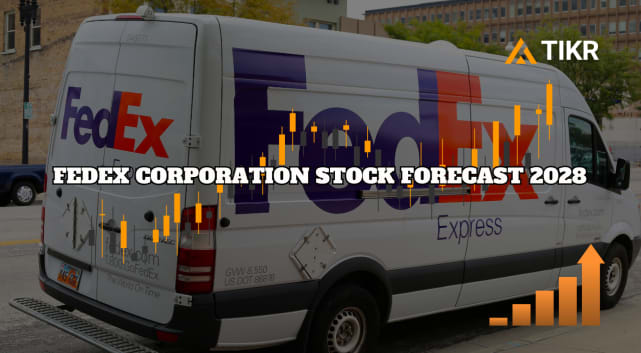Every quarter, public companies and large investors open their books, not for the media, but for regulators. Those SEC-required filings are how the market stays honest. They’re also one of the most valuable (and underused) sources of insight for everyday investors.
A quarterly earnings headline might tell you revenue was “up 6%,” but the filings reveal whether that growth was organic or driven by debt, how margins held up, and what management really said about the next quarter. If you want to think like a professional investor, it starts by reading what professionals actually read: filings.
The good news? You don’t need to dig through PDFs on EDGAR anymore. Platforms like TIKR consolidate the most important reports, from earnings releases to insider transactions, in one clean, searchable interface. Here are the five filings that deserve your attention every quarter and what each one can teach you.
How to Track Public Filings Like a Pro
Before diving into specific funds, it helps to know how professionals approach these disclosures. A 13F is more than a list of stocks: it’s a map of conviction. Serious investors read them the way analysts read financial statements: looking for intent, timing, and confirmation.
Read hedge-fund filings in less than 60 seconds with TIKR (It’s free) >>>
For example, in the case of hedge fund filings, start by scanning new positions and additions, which usually reflect a fresh thesis or growing confidence. Then note reductions or exits, which can signal profit-taking or a shift in outlook. But don’t stop there, as the real insight comes from connecting those moves to fundamentals. When a fund increases exposure to a sector, open those same tickers in TIKR to check valuation, revenue trends, and cash flow. If the fundamentals align with the move, you’ve found a thesis worth exploring.
Finally, track patterns across funds. If multiple managers are quietly building stakes in similar industries, say, industrial automation or clean energy, that convergence often reveals where long-term capital is rotating. Reading filings this way turns you from an observer into an analyst, and tools like TIKR make that process seamless.
Track the top holdings & recent investments of over 10,000 top hedge funds with TIKR (It’s free) >>>
1. The 10-Q – The Quarterly Report That Tells the Real Story

If there’s one public filing every serious investor should read, it’s the 10-Q. Filed three times a year (with the 10-K as the annual version), the 10-Q gives a comprehensive look at a company’s financial performance, risks, and management commentary.
Unlike a press release or earnings call, the 10-Q shows what actually changed, from margins and cash flow to debt, inventories, and capital expenditures. It’s the best place to spot early signs of trouble: rising interest expenses, shrinking liquidity, or deteriorating working capital.
In TIKR, you can see all of this instantly as the platform translates raw data into interactive charts and tables, letting you compare revenue growth, profit margins, and cash flow over multiple quarters. You can even benchmark against peers to see if a problem is company-specific or sector-wide.
Pro tip: Pay special attention to the “Management’s Discussion and Analysis (MD&A)” section, which often contains subtle warnings or strategic shifts that don’t make headlines.
2. The 13F – A Quarterly Window Into Hedge Fund Holdings
A 13F filing is how hedge funds and institutional investors reveal their equity holdings each quarter. Any manager with more than $100 million in assets must disclose long positions within 45 days of the quarter’s end.
While it’s technically a backward-looking report, it’s still a powerful tool for spotting trends and conviction. When multiple funds are quietly accumulating shares of the same company, especially before analysts start raising estimates, that overlap can be an early signal of institutional interest.
In TIKR, you can review these filings under the Filings tab, which tracks hedge fund positions, changes over time, and percentage ownership. You can then cross-check valuation metrics and financial health in the same dashboard, turning raw filings into actionable context.
What to watch for: Large position increases, first-time buys, or new sector exposure are all signs that capital is flowing into a new theme.
3. The 8-K – Real-Time Updates You Can’t Afford to Miss
While the 10-Q and 10-K summarize past quarters, the 8-K is about what’s happening right now. Companies are required to file an 8-K whenever a significant event occurs, a CEO departure, major acquisition, restatement, or anything that could materially affect shareholders.
These filings can move markets within hours and often tell you more than a press release. A vague statement about “leadership transitions” might sound benign until the 8-K reveals that the CFO resigned unexpectedly due to audit concerns.
On TIKR, you can track 8-K filings alongside valuation and price data to see how markets react in real time. The platform’s integration with EDGAR automatically updates these disclosures, making it easy to stay informed without constantly checking news feeds.
Pro tip: Always skim 8-Ks when volatility spikes, as it’s where surprises and red flags tend to appear first.
Quickly see market reactions to 8-K updates with TIKR (It’s free) >>>
4. The Proxy Statement (DEF 14A) – Follow the Money and Power
Filed annually, the Proxy Statement (Form DEF 14A) is technically about voting at shareholder meetings, but it’s also the clearest window into executive pay, board decisions, and control dynamics.
It tells you how aligned management’s incentives are with shareholders. If bonuses are tied to revenue growth but not profitability, that’s a red flag. The proxy also discloses insider and major shareholder ownership, giving clues about who truly influences the company’s direction.
Next, check whether executive compensation aligns with performance, or whether insider ownership has risen or fallen. If pay is climbing while margins are shrinking, that mismatch speaks volumes.
Why it matters: Companies that reward long-term value creation tend to outperform those driven by short-term incentives, and the proxy is where you’ll find that distinction.
5. The Form 4 – Insider Transactions That Signal Confidence Or Concern

The Form 4 reports insider trades, when executives or directors buy or sell shares of their own company. It’s often overlooked, but historically, insider buying has correlated with above-average returns, especially when it happens in clusters or during selloffs.
Unlike 13Fs, which disclose institutional positions quarterly, Form 4s must be filed within two business days of a trade. That makes them one of the most timely indicators of insider sentiment.
You can see these trades in TIKR under the Insider Transactions view, which tracks who’s buying or selling, how often, and at what price. It’s also easy to compare insider activity against fundamentals, for instance, whether executives are buying as the company’s margins or cash flow improve.
The key: Look for large, open-market buys by multiple insiders. That’s a much stronger signal than option exercises or routine sales.
How to Use These Public Filings Together
Each public filing tells a different part of the story, but when you read them together, they form a complete picture of how a company operates, how insiders behave, and how institutions respond.
Think of it like a financial ecosystem: the 10-Q shows how the business performed, the 8-K captures what’s changing right now, the 13F reveals who’s backing that performance, the Form 4 shows whether insiders share that conviction, and the Proxy Statement explains how leadership is being rewarded for results (or not).
Here’s how to use them in sequence:
- Start with the 10-Q to understand how fundamentals are evolving, revenue, margins, debt, and cash flow.
- Check recent 8-Ks to catch any breaking developments that could reshape that narrative, such as executive changes, acquisitions, or restatements.
- Review 13Fs to see how hedge funds and institutional investors are reacting, are they accumulating, trimming, or avoiding the stock entirely?
- Scan Form 4s for insider buying or selling to gauge management’s confidence in their outlook.
- Read the Proxy Statement annually to evaluate governance, compensation, and whether leadership incentives align with long-term shareholder value.
Used together, these filings create a 360-degree view of a company, one that goes far beyond the quarterly earnings headline. You can see whether growth is sustainable, whether insiders are acting on their words, and whether institutions are buying into the same story management is selling.
In TIKR, this process takes minutes. You can move seamlessly from the 10-Q to ownership trends, overlay insider transactions, and cross-check valuation, all in one place. That efficiency lets you focus on what really matters: connecting numbers to behavior, and behavior to opportunity.
TIKR Takeaway
Filings are where the truth lives, long before it shows up in analyst notes or media coverage. They reveal how companies actually make money, where risks are emerging, and whether leadership’s incentives are aligned with shareholders.
TIKR brings all of that transparency together. By integrating financial statements, insider trades, hedge fund holdings, and historical valuation data into a single interface, it enables investors to build context around every disclosure. You can see how a new 8-K announcement affects valuation, how insider activity lines up with earnings trends, and whether institutional capital is following the same signals you’re seeing.
The difference between a casual investor and a serious one often comes down to information discipline. TIKR gives you the structure professionals use, complete, connected, and credible. It replaces noise with clarity, letting you focus on the story the filings are actually telling.
With TIKR, you don’t just read filings, you understand them. And that’s where better investing decisions begin.
AI Compounders With Massive Upside That Wall Street Is Overlooking
Everyone wants to cash in on AI. But while the crowd chases the obvious names benefiting from AI like NVIDIA, AMD, or Taiwan Semiconductor, the real opportunity may lie in the AI application layer, where a handful of compounders are quietly embedding AI into products people already use every day.
TIKR just released a new free report on 5 undervalued compounders that analysts believe could deliver years of outperformance as AI adoption accelerates.
Inside the report, you’ll find:
- Businesses already turning AI into revenue and earnings growth
- Stocks trading below fair value despite strong analyst forecasts
- Unique picks most investors haven’t even considered
If you want to catch the next wave of AI winners, this report is a must-read.
Click here to sign up for TIKR and get your free copy of TIKR’s 5 AI Compounders report today.
Looking for New Opportunities?
- Discover which stocks billionaire investors are purchasing, so you can follow the smart money.
- Analyze stocks in as little as 5 minutes with TIKR’s all-in-one, easy-to-use platform.
- The more rocks you overturn… the more opportunities you’ll uncover. Search 100K+ global stocks, global top investor holdings, and more with TIKR.
Disclaimer:
Please note that the articles on TIKR are not intended to serve as investment or financial advice from TIKR or our content team, nor are they recommendations to buy or sell any stocks. We create our content based on TIKR Terminal’s investment data and analysts’ estimates. Our analysis might not include recent company news or important updates. TIKR has no position in any stocks mentioned. Thank you for reading, and happy investing!







